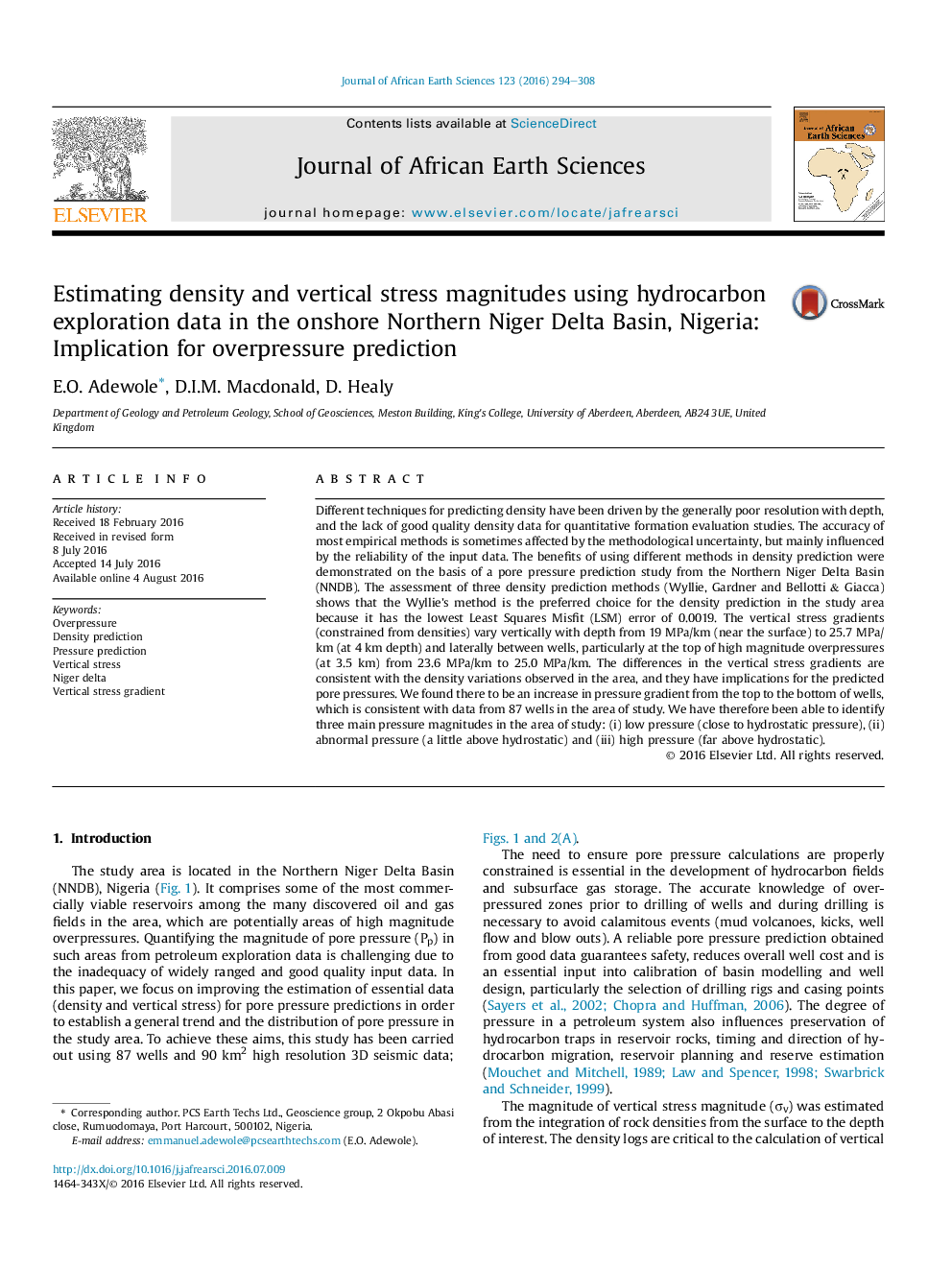| کد مقاله | کد نشریه | سال انتشار | مقاله انگلیسی | نسخه تمام متن |
|---|---|---|---|---|
| 4728184 | 1640185 | 2016 | 15 صفحه PDF | دانلود رایگان |

• Choosing the right density prediction method is a key to realistic density data.
• Vertical stress varies vertically with depth and laterally between wells.
• The variability of vertical stress gradients is consistent with that of density.
• Predicted pressures from density agree with mud weights and pressures from wells.
• Overpressure changes rapidly with depth compared to pressure and vertical stress.
Different techniques for predicting density have been driven by the generally poor resolution with depth, and the lack of good quality density data for quantitative formation evaluation studies. The accuracy of most empirical methods is sometimes affected by the methodological uncertainty, but mainly influenced by the reliability of the input data. The benefits of using different methods in density prediction were demonstrated on the basis of a pore pressure prediction study from the Northern Niger Delta Basin (NNDB). The assessment of three density prediction methods (Wyllie, Gardner and Bellotti & Giacca) shows that the Wyllie's method is the preferred choice for the density prediction in the study area because it has the lowest Least Squares Misfit (LSM) error of 0.0019. The vertical stress gradients (constrained from densities) vary vertically with depth from 19 MPa/km (near the surface) to 25.7 MPa/km (at 4 km depth) and laterally between wells, particularly at the top of high magnitude overpressures (at 3.5 km) from 23.6 MPa/km to 25.0 MPa/km. The differences in the vertical stress gradients are consistent with the density variations observed in the area, and they have implications for the predicted pore pressures. We found there to be an increase in pressure gradient from the top to the bottom of wells, which is consistent with data from 87 wells in the area of study. We have therefore been able to identify three main pressure magnitudes in the area of study: (i) low pressure (close to hydrostatic pressure), (ii) abnormal pressure (a little above hydrostatic) and (iii) high pressure (far above hydrostatic).
Journal: Journal of African Earth Sciences - Volume 123, November 2016, Pages 294–308